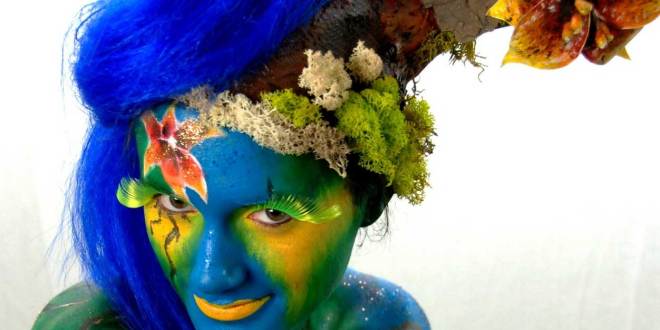The first canvas for artistic expression was the human body, and the practice has not abated today. Used in many situations, mostly to increase the appearance of ferocity or beauty in a person, the art has become very sophisticated in modern times, and the effect of reality in many of these artworks can be startling.
Warriors in ancient as well as modern times have used body painting, either to frighten their opponent or create a camouflage effect for better security. Face painting was believed to be especially effective at increasing a fighter’s chances and the practice has not waned in modern times. Face painting on fighters from professional wrestlers to soldiers helps them to stand out or blend in, as desired. Butterflies in face painting have an opposite effect, creating a friendly face in a community gathering.
All types of body art abound, due to the relaxation of social mores. Ancient religious ceremonies relied on face painting and even today, the Bindi marking is a form of face painting, a drop on the forehead. Indigenous peoples in Australia, New Zealand, the Pacific islands and parts of Africa still employ body painting with clay and other natural pigments for ceremonial use. Face and body painting are sometimes taken to extremes by sports fans displaying their loyalties with body art.
You can find such painting in almost every venue. Today’s commercials, print ads, magazine covers, fine art and characterisation take advantage of the modern ability to create something extraordinary on a canvas of human skin. Modern techniques have come a long way from daubing mud on skin; materials and techniques have also become more sophisticated. Airbrushing techniques in particular have made the art more detailed and realistic. The work lasts sometimes for days, without the permanence of a tattoo.
What’s the appeal, you wonder? Perhaps it is the tongue-in-cheek, humorous quality of the paintings. Perhaps it comes from the aspect of fooling the viewer, or even from the nakedness of the model, whose painted garments do nothing to hide the essential fact of the painting being on her skin.
 Mind Gem
Mind Gem
